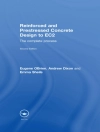U.S. Air Force (USAF) planners have envisioned that uninhabited air vehicles (UAVs), working in concert with inhabited vehicles, will become an integral part of the future force structure. Current plans are based on the premise that UAVs have the potential to augment, or even replace, inhabited aircraft in a variety of missions. However, UAV technologies must be better understood before they will be accepted as an alternative to inhabited aircraft on the battlefield. The U.S. Air Force Office of Scientific Research (AFOSR) requested that the National Research Council, through the National Materials Advisory Board and the Aeronautics and Space Engineering Board, identify long-term research opportunities for supporting the development of technologies for UAVs. The objectives of the study were to identify technological developments that would improve the performance and reliability of "generation-after-next" UAVs at lower cost and to recommend areas of fundamental research in materials, structures, and aeronautical technologies. The study focused on innovations in technology that would "leapfrog" current technology development and would be ready for scaling-up in the post-2010 time frame (i.e., ready for use on aircraft by 2025).
Aeronautics and Space Engineering Board & Commission on Engineering and Technical Systems
Uninhabited Air Vehicles [PDF ebook]
Enabling Science for Military Systems
Uninhabited Air Vehicles [PDF ebook]
Enabling Science for Military Systems
Compre este e-book e ganhe mais 1 GRÁTIS!
Língua Inglês ● Formato PDF ● Páginas 124 ● ISBN 9780309515931 ● Editora National Academies Press ● Publicado 2000 ● Carregável 3 vezes ● Moeda EUR ● ID 7146189 ● Proteção contra cópia Adobe DRM
Requer um leitor de ebook capaz de DRM












